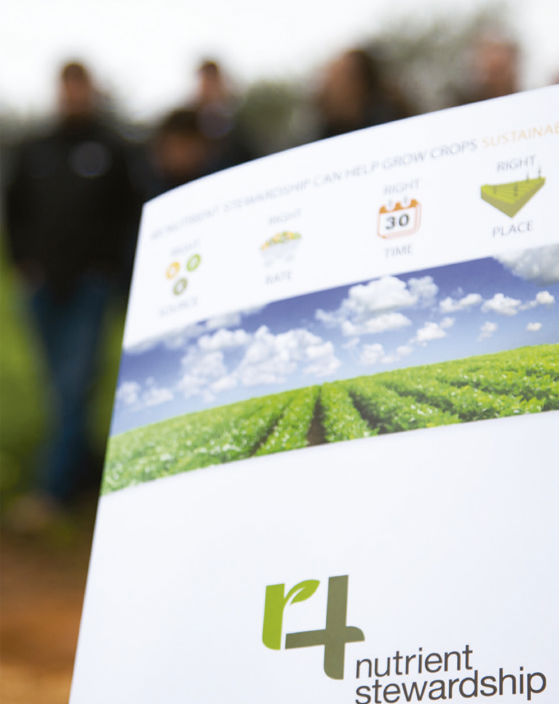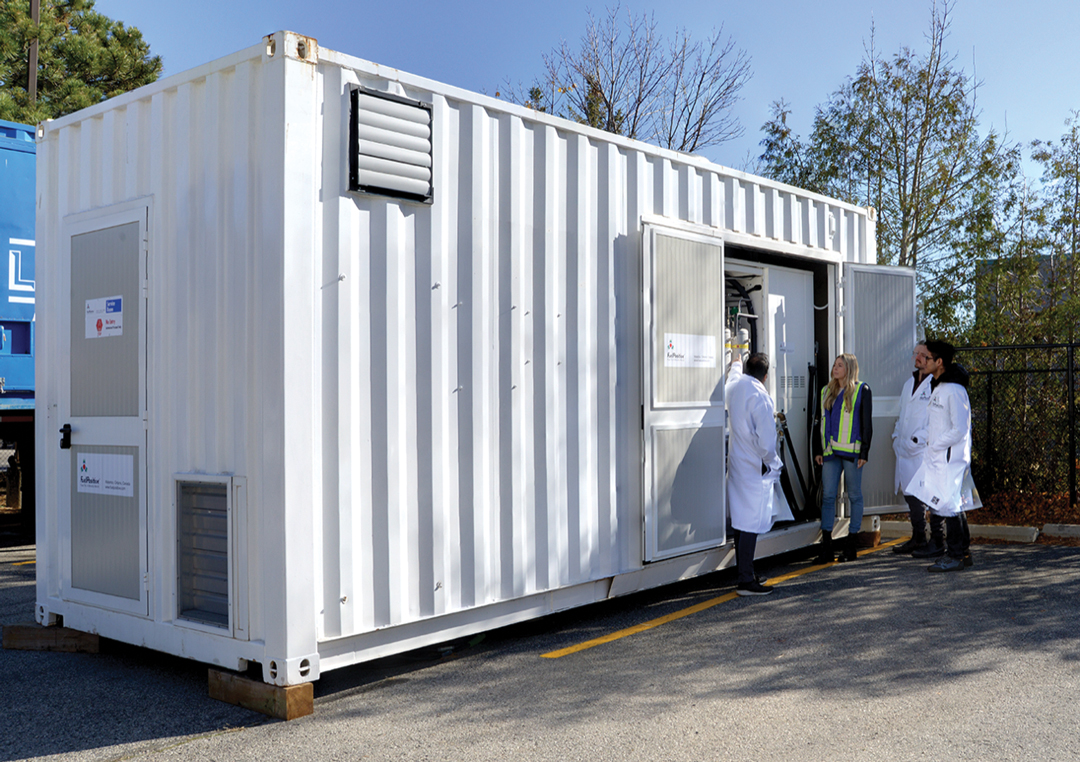Fertilizing for the Future
Farming 4R Land helps growers enrich soil the right way
A big push is now underway to encourage farmers in Alberta to reduce greenhouse gas (GHG) emissions—and increase profits while they’re at it.
“[Farming 4R Land] is designed to help Alberta farmers get better economic and environmental results through better stewardship of fertilizer products,” said Clyde Graham, vice-president of strategy and alliances at the Canadian Fertilizer Institute (CFI).
Farming 4R Land (Alberta) is part of a new national project by the CFI that aims to ensure as much fertilizer as possible ends up in the bin, rather than the air or water.
“The more nutrients you get into the plant, the better the return,” said Dan Heaney, the top soil fertility scientist on the project. “And the more nutrient you get in the plant, the less there is to wander off and get into trouble in the water or come off as greenhouse gas.”
In recent years, Heaney said a lot of high-level research into fertilizer use optimization has been done across North America. The result of this research is the “4R” method of fertilization, which focuses on applying the right fertilizer source, at the right rate, at the right time and in the right place. Following these best practices optimizes fertilizer uptake, and reduces runoff and GHG emissions.
For example, Heaney said, fertilizing in the winter is generally the wrong time, since most of the nutrients can’t penetrate the frozen ground and will simply run off in the spring, taking the farmer’s investment with it. Similarly, “broadcasting” fertilizer equally across entire fields is less effective than ensuring higher concentrations are spread onto areas that need it most, Heaney said.
“The 4R method is aimed at reducing the environmental impact of fertilizers,” he said. “It’s not a fertilizer reduction program.”
Reducing
the amount of nitrous oxide that is released into the atmosphere from the province’s agricultural land is a key goal of Farming 4R Land.
According to Heaney, all agricultural land emits a baseline level of nitrous oxide, even when unfertilized, due to naturally occurring chemical processes. Ensuring more nitrogen gets into the target crop, he said, helps keep this greenhouse gas out of the atmosphere.
The Province of Alberta has set targets to reduce GHG emissions from agricultural land with the Nitrous Oxide Emission Reduction Protocol (NERP).
Graham said this presents Alberta farmers with an opportunity to make some extra money on the side by collecting and selling offset credits.
“If they can get involved in offset projects, they can make some money by getting some offset credits,” he said. “These can then be sold to large industries that have emissions and need those offsets to comply with Alberta’s emissions programs.”
Farming 4R Land estimates that using the 4R best practices will reduce GHG emissions by 15 to 25 per cent by using nitrogen fertilizer more efficiently.
Bruce Ringrose, vice-president of business development at GHG emissions management provider ClimateCHECK, said global companies like Walmart and Unilever have also set targets to reduce emissions throughout their supply chains. Alberta’s farmers risk losing market share to regions that are using more sustainable practices if an effort isn’t made, he added.
“The downstream supply chain is starting to ask for more and more information about environmental stewardship on the farm,” Ringrose said. “And the 4R framework is a potential tool to demonstrate to the supply chain that good practices and stewardships are occurring.
“We need to be able to demonstrate we can be good stewards of the land.”
Training courses in the 4r method are available online, and farmers interested in participating in the program can learn more from their crop advisors or agri-retailers.







Comments